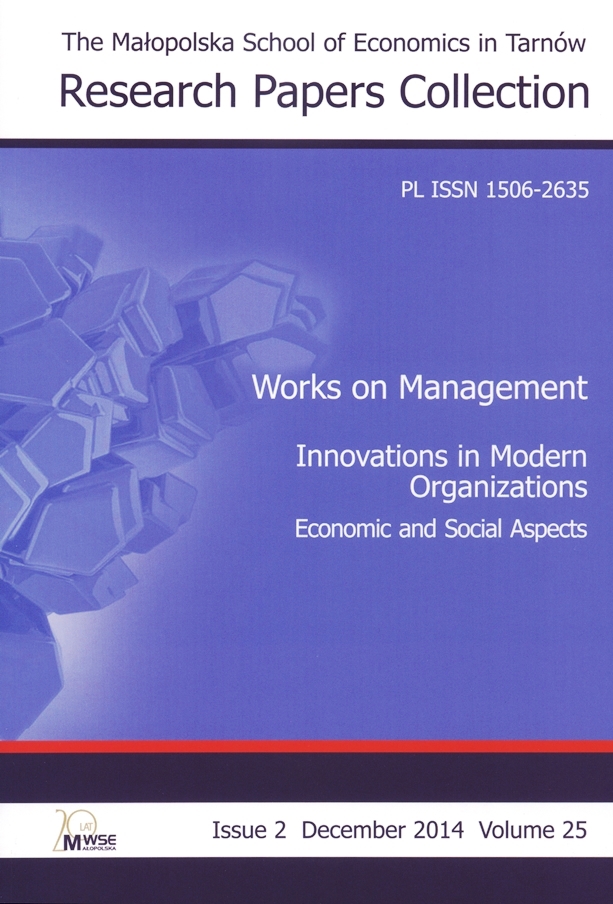Abstract
The promotion of brands, services and products using forms of digital advertizing is nowadays employed strategically by organizations in order to reach customers. This kind of advertizing uses digital media for the distribution of marketing and communication messages in attempt to promote interactivity and raise effectiveness. In that way, both servicing and engaging customers are the aim. This paper argues that social media may create a virtual community which spreads the ‘sense of belonging’ to such a community for potential customers in order to feel part of it even if they have never met. Social media have a significant role to play on the creation of the experience—brand experience on the Internet and the engagement of the consumers to this process with the provision of an ‘e-experience’ and their participation which can be of outmost importance. Managers in charge of social media management may be part of the consumer discussions in a manner that is consistent with the organization’s mission; the creation of blogs and networks that bring customers together may enforce the creation of e-communities which can be accomplished using specific symbols and a language that is familiar to this online group. The integration of social media into the marketing programme of an organization or a company as tools consists of an innovative procedure for the co-creation of experience with the consumer.
References
Advertising on Facebook (2014) [online, accessed: 2014-02-23]. Retrieved from: https://www.facebook.com/help/247824495237141.
View in Google Scholar
Anderson, B. (1991). Imagined communities. London: Verso. ISBN 978-0-86091-546-1.
View in Google Scholar
Baum, N. (2011). Social networks 2.0. In: R. Burnett, M. Consalvo, Ch. Ess (eds.). The handbook of Internet studies (pp. 384–405). Malden: Wiley-Blackwell. ISBN 978-1-4051-8588-2.
View in Google Scholar
Brakus, J., Schmitt, B., Zarantonello, L. (2009). Brand Experience: What is it? How is it measured? Does it affect loyalty? Journal of Marketing, 73, 52‒68.
View in Google Scholar
Burnett, R., Consalvo, M., Ess, Ch. (eds.) (2011). The handbook of Internet studies. Malden: Wiley-Blackwell. ISBN 978-1-4051-8588-2.
View in Google Scholar
Cover Photos Carrefour Marinopoulos Super Market (2014) [online, accessed: 2014-02-25]. Retrieved from: https://www.facebook.com/photo.php?fbid=669749589714945&set=a.418676971488876.92299.416207085069198&type=1&theater.
View in Google Scholar
Cutler, K. M. (2012). Stats: Facebook made $9.51 in ad revenue per user last year in the U.S. and Canada [online, accessed: 2014-02-23]. Retrieved from: http://techcrunch.com/2012/05/03/stats-facebook-made-9-51-in-ad-revenue-per-user-last-year-in-the-u-s-and-canada/.
View in Google Scholar
Danias, K., Kavoura, A. (2013). The role of social media as a tool of a company’s innovative communication activities. The Małopolska School of Economics in Tarnów Research Papers Collection, 23 (2), 75‒83.
View in Google Scholar
Dijck, J. van (2013) ‘You have one identity’: Performing the self on Facebook and LinkedIn. Media, Culture and Society, 35, 199‒235.
View in Google Scholar
Facebook Basics (2014). Facebook for business [online, accessed 2014-06-18]. Retrieved from: https://www.facebook.com/business/overview.
View in Google Scholar
Facebook Photobucket (2010) [online, accessed 2014-06-15]. Retrieved from: http://media.photobucket.com/user/mafiashaolin/media/736444d4.png.html?filters[term]=facebook&filters[primary]=images&filters[secondary]=videos&sort=1&o=19.
View in Google Scholar
Kavoura, A., Bitsani, E. (2013). E-branding of rural tourism in Carinthia, Austria. Tourism. An International Interdisciplinary Journal, 61, 289‒312.
View in Google Scholar
Kavoura, A., Pelet, J. E., Rundle-Thiele S., Lecat, B. (2014). Experience matters: Exploring the experience behavioral loyalty relationship in wine. 2014 Global Marketing Conference at Singapore, Wine Marketing and Management Track, 15–18 July 2014.
View in Google Scholar
Kilamby, A., Laroche, M., Richard, M. O. (2013). Constitutive marketing. Towards understanding brand community formation. International Journal of Advertising, 32, 45‒64.
View in Google Scholar
Kozioł, L., Wojtowicz, A., Pyrek, R. (2013). Development οf pro-innovative culture as self-improvement οf an organization. 3rd International Conference on Quantitative and Qualitative Research on Administration Sciences, 23–24 May 2013.
View in Google Scholar
Marwick, A., Boyd, D. (2010). I tweet honestly, I tweet passionately: Twitter users, context collapse, and the imagined audience. New Media and Society, 13, 114‒133.
View in Google Scholar
Noff, A. (2011). What’s next in Social Media [online, accessed: 2014-02-22]. Retrieved from: http://thenextweb.com/socialmedia/2011/06/14/whats-next-in-social-media/.
View in Google Scholar
Papacharissi, Z. (2009). The virtual geographies of social networks: A comparative analysis of Facebook, LinkedIn and Asmall World, New Media and Society, 11, 199‒220.
View in Google Scholar
Perkel, D. (2006). Copy and paste literacy: Literacy practices in the production of a MySpace profile [online, accessed: 2014-02-22]. Retrieved from: http://people.ischool.berkeley.edu/~dperkel/media/dperkel_literacymyspace.pdf.
View in Google Scholar
Salesforce Exacttarget Marketing Cloud [online, accessed: 2014-06-18]. Retrieved from: http://www.salesforcemarketingcloud.com/.
View in Google Scholar
Salesforce.com (2013). The Facebook Ads Benchmark Report [online, accessed: 2014-02-25]. Retrieved from: http://www.salesforcemarketingcloud.com/wp-content/uploads/2013/06/The-Facebook-Ads-Benchmark-Report.pdf?b9be0c.
View in Google Scholar
Siomkos, G., Tsiamis, J. (2004). Στρατηγικό Ηλεκτρονικό Μάρκετινγκ [Strategic Electronic Marketing]. Athens: Stamouli. ISBN-13 978-960-351-523-4.
View in Google Scholar
Stavrianea, A., Kavoura, A. (2014). Communicating the sense of belonging to an ‘imagined community’ of a destination for advertising its proposed experiences and the creation of brand loyalty. Paper presented at the 2nd International Conference on Marketing and Management Issues Athens, 18–20 June, pp. 1024‒1030.
View in Google Scholar
Timeline Photos Pampers (2014) [online, accessed: 2014-02-25]. Retrieved from: https://www.facebook.com/photo.php?fbid=615978555133472&set=a.392556127475717.88410.387240021340661&type=1&theater.
View in Google Scholar
Warren, C. (2010). When are Facebook users most active? Study [online, accessed: 2014-02-23]. Retrieved from: http://mashable.com/2010/10/28/facebook-activity-study/.
View in Google Scholar
Weise, K. (2011). A lie detector test for online reviewers [online, accessed: 2014-02-23]. Bloomberg BusinessWeek, 29th September. Retrieved from: http://www.businessweek.com/magazine/a-lie-detector-test-for-online-reviewers-09292011.html.
View in Google Scholar
Zhang, J. (2010). Social media and distance education [online, accessed: 2014-02-22]. Retrieved from: http://deoracle.org/online-pedagogy/emerging-technologies/social-media-and-distance-education.html?PHPSESSID=adb9b0c9f094d0d923de6f3b3f65ef7a.
View in Google Scholar
© Copyright by Małopolska School of Economics in Tarnów. The articles are available under the Creative Commons Attribution NonCommercial-NoDerivatives 4.0 International License


